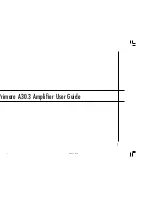TDA8948J_1
© NXP B.V. 2008. All rights reserved.
Product data sheet
Rev. 01 — 27 February 2008
22 of 26
NXP Semiconductors
TDA8948J
4-channel audio amplifier
16.4 Reflow soldering
Key characteristics in reflow soldering are:
•
Lead-free versus SnPb soldering; note that a lead-free reflow process usually leads to
higher minimum peak temperatures (see
Figure 16
) than a SnPb process, thus
reducing the process window
•
Solder paste printing issues including smearing, release, and adjusting the process
window for a mix of large and small components on one board
•
Reflow temperature profile; this profile includes preheat, reflow (in which the board is
heated to the peak temperature) and cooling down. It is imperative that the peak
temperature is high enough for the solder to make reliable solder joints (a solder paste
characteristic). In addition, the peak temperature must be low enough that the
packages and/or boards are not damaged. The peak temperature of the package
depends on package thickness and volume and is classified in accordance with
Table 12
and
13
Moisture sensitivity precautions, as indicated on the packing, must be respected at all
times.
Studies have shown that small packages reach higher temperatures during reflow
soldering, see
Figure 16
.
Table 12.
SnPb eutectic process (from J-STD-020C)
Package thickness (mm)
Package reflow temperature (
°
C)
Volume (mm
3
)
< 350
≥
350
< 2.5
235
220
≥
2.5
220
220
Table 13.
Lead-free process (from J-STD-020C)
Package thickness (mm)
Package reflow temperature (
°
C)
Volume (mm
3
)
< 350
350 to 2000
> 2000
< 1.6
260
260
260
1.6 to 2.5
260
250
245
> 2.5
250
245
245


















